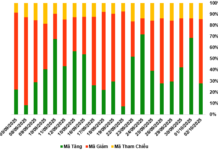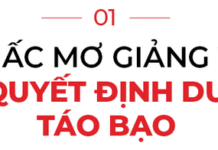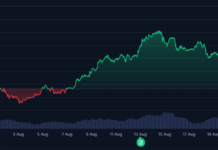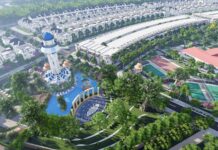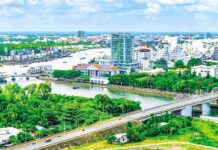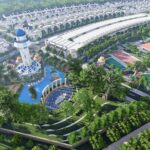The Economic Landscape of Vietnam’s 6th Centrally Governed City
National Assembly Resolution No. 38/2021/QH15, which pilots special mechanisms and policies for financial management, state budgets, and heritage conservation funds, has been a catalyst for Hue’s urban development. Through flexible financial mechanisms and heritage conservation funds, the resolution has enabled Hue to maximize investment in urban infrastructure, heritage preservation, and sustainable socio-economic growth.
From 2021 to 2024, Hue’s total social investment reached nearly VND 119 trillion, with annual growth rates ranging from 9.6% to 16.9%. In the first half of 2025 alone, the GRDP recorded a historic increase of 9.39%, with total social investment nearing VND 20 trillion, up 39% year-on-year. The city attracted over VND 27 trillion in investment across 19 new projects and 461 newly established businesses, marking a significant rise in both quantity and registered capital. Notably, the service sector contributed VND 6.371 trillion, accounting for 51% of the economic structure. Hosting the “National Tourism Year – Hue Festival 2025” with nearly 160 national and provincial events has successfully boosted tourism from the start of the year.
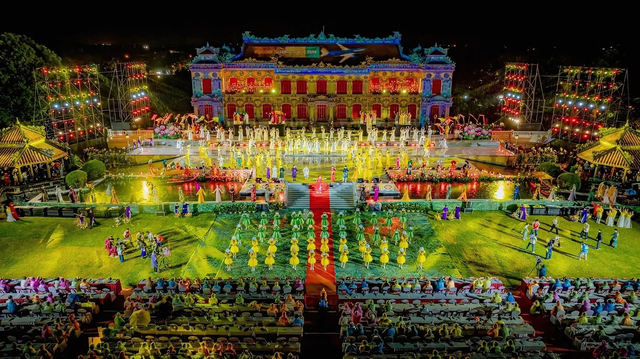
Hue boasts 8 UNESCO-recognized world and regional heritage sites (Illustrative image)
Hue is renowned as a tourism destination with 8 UNESCO-recognized world and regional heritage sites. Its long-term urban development plan aims to establish Hue as Vietnam’s distinctive heritage city by 2030, while also positioning it as a prominent Southeast Asian hub for culture, tourism, and specialized healthcare. A key feature of this strategy is the development of multiple urban centers, expanding the cityscape along the southern bank of the Huong River, integrated with a vibrant night economy and year-round cultural events.
Where Will Investment Capital Flow?
Preserving urban morphology and developing satellite cities are among the five key solutions implemented by Hue’s People’s Committee to enhance UNESCO heritage values and foster comprehensive socio-economic growth as a centrally governed city. In an article titled “Urban Management and Development in Hue: Preserving and Promoting Heritage Values” published in Construction Magazine, Mr. Hoang Hai Minh, Vice Chairman of Thua Thien – Hue Provincial People’s Committee, outlined Hue’s urban spatial structure as “One unified heritage system, Two ecological landscapes, Three economic corridors, Three urban development hubs, and Four management zones.”
The satellite city development strategy focuses on connectivity axes, ring roads, and river bridges to create a network of commercial, cultural, and entertainment destinations. Concurrent infrastructure projects such as the T2 Terminal at Phu Bai International Airport, the expansion of Pham Van Dong Road, Thuan An Sea Bridge, and Nguyen Hoang Bridge are poised to drive Hue’s next growth phase.
Directed investment in transportation, commerce, and cultural infrastructure is set to catalyze the growth of service complexes and riverside commercial real estate. Once this infrastructure is fully developed, the heritage city will see increased revenue from tourism, services, commerce, and hospitality, while also boosting property values. In practice, Hue’s real estate market has begun to witness the emergence of integrated cultural-commercial centers alongside F&B, retail, and boutique hotel ecosystems.
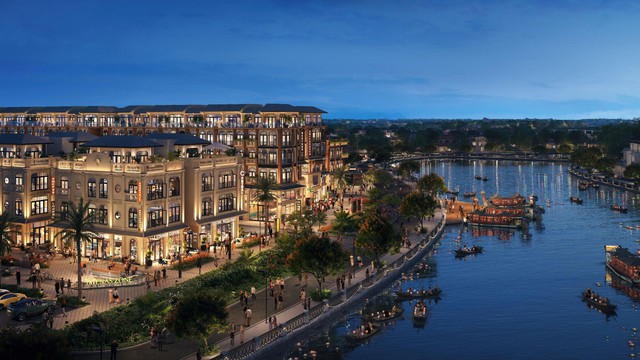
Festival Mall has become a cultural and entertainment hub in Hue
This shift is exemplified by the Menas Zone Vy Da project, which pioneers the “Festival Mall” concept in Hue. This premium real estate project has transformed festivals into a consistent and culturally rich business flow. Praised by international experts for its design that blends world heritage with modern living, it vividly portrays a heritage city harmonizing traditional Hue culture with international commercial functionality. This aligns with Hue’s urban spatial vision, fulfilling the elements of “heritage,” “ecological landscape,” and “urban development.” Projects like Menas Zone Vy Da are instrumental in creating new “Western-style districts,” propelling Hue’s rise on the international tourism map as a vibrant, modern heritage city.
The Future of High-End Real Estate
Favorable macroeconomic policies, higher-than-average public investment disbursement rates, and the push for infrastructure development through public-private partnerships are expected to lay a solid foundation for sustainable real estate growth. From an investment perspective, Hue’s unique advantage lies in its “heritage-culture-services” triad, shaping real estate demand toward dual-purpose assets that offer both ownership/investment and commercial/tourism exploitation potential.
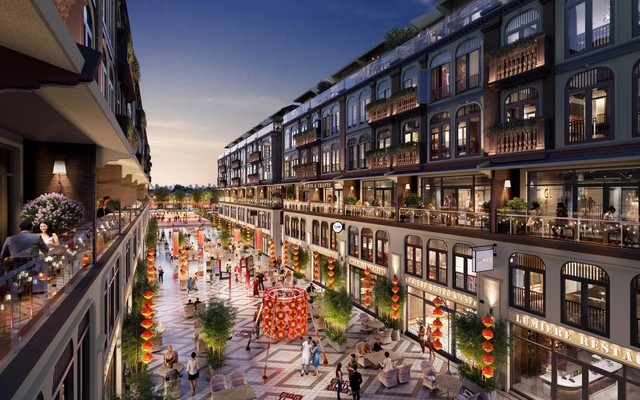
Premium projects are poised to set new price benchmarks in Hue’s market
However, despite rising demand, supply remains limited. According to the Hue Department of Construction, the second quarter of 2025 saw only 4 active projects and 6 eligible for future home sales, with no new commercial housing permits issued. With central and riverside land becoming increasingly scarce, the existing supply gap is expected to drive new price levels, particularly for premium projects leveraging the “heritage-culture-services” advantage, such as Menas Zone Vy Da.
After a cautious period, investors now prioritize assets with existing revenue and flexible operational designs. Rather than speculative price increases, the focus is on floor area efficiency and low operational risk. For long-term investments, allocating capital to Hue’s market at this juncture is promising. As such, the Heritage Shophouses and riverside villas at Menas Zone Vy Da are anticipated to become sustainable profit channels as Hue solidifies its status as a centrally governed city.





